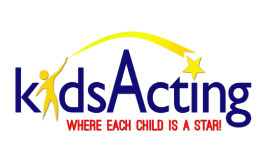My friend didn’t notice that cursive had been cut from her son’s curriculum until she watched him “sign” a code of conduct agreement. It got her thinking. Are curlicues and loopyletters a relic of the past, gone the way of calligraphy and the abacus? Many experts believe so, but cursive proponents think it is a big mistake to erase cursive from the school curriculum.
As often is the case, the bottom line is time. Educators are hard pressed to fit in the required curriculum, and every minute of the day counts. The Common Core, a set of academic standards adopted by 45 states and the District of Columbia, does not include cursive writing. While Texas is one of the few states to opt out of the Common Core, many schools here have ceased teaching script writing in favor of keyboarding and computer skills believed to be more relevant to students’ lives and futures.
Tradition vs. Practicality
Many of the arguments for teaching cursive writing are sentimental. Memories of receiving an elegant letter in the mail. Grandmother’s notes in the attic. Historical documents with their forward facing loops and curves.
Steve Graham, an education professor at Arizona State University and one of the top U.S. experts on handwriting instruction, explains, “What I typically hear for keeping cursive is how nice it is when you receive a beautifully cursive-written letter. It’s like a work of art,” Graham says. “It’s pretty, but is that a reason for keeping something, given that we do less and less of those kinds of cards anymore?”
What about historical documents, like the Constitution and the Declaration of Independence? Will future historians who lack the ability to read cursive be able to study original documents? Kate Gladstone, founder of Handwriting Repair/Handwriting That Works and the director of the World Handwriting Contest argues that handwriting matters, but not cursive.
She says, “Reading cursive matters, but even children can be taught to read writing that they are not taught to produce. Reading cursive can be taught in just 30 to 60 minutes—even to 5- or 6-year-olds—once they read ordinary print. Why not teach children to read cursive, along with teaching other vital skills, including a handwriting style typical of effective handwriters?”
Developmental Benefits
The decline of teaching cursive in schools has sparked scientific interest on the effects. “When we write, a unique neural circuit is automatically activated,” says Stanislas Dehaene, a psychologist at the Collège de France in Paris. “There is a core recognition of the gesture in the written word, a sort of recognition by mental simulation in your brain,” he says. “Learning is made easier.”
Karin James, a psychologist at Indiana University, used brain scanners to observe physiological differences between brain functions. Participants in this study were children who had yet to read or write. They were given a letter or shape and asked to reproduce it in one of three ways: type it on a computer, trace it on a page with a dotted outline or draw it on a blank line.
Brain scans showed that the children who had drawn the letter freehand showed increased activity in three areas of the brain that are activated when adults read and write. This increase in activity was not seen in the other two sets of children.
When writing cursive, the brain is required to control hand and finger movements while visually tracking the nuanced and changing positions of the pencil. This could account for the increase of neural activity. This coordination and tracking are also believed to aid in fine motor skills and motor planning, which is particularly helpful for students with certain learning disabilities, such as dyslexia.
Virginia Berninger, a psychologist at the University of Washington, studied children in grades two through five. She found that unique brain patterns are activated by printing, cursive writing and typing. She also determined that when children composed text by hand, they produced more words and at a higher rate while expressing a greater variety of ideas.
Is it worth instructional time to ensure your child can sign a check or scribble a signature with his fingertip at the checkout line? The cursive debate is one that is likely to go on for years.
Jennifer VanBuren is a Georgetown mother of three, educator and childbirth doula.
Where do you stand? Should cursive be taught in schools?
Click here to take our survey
















